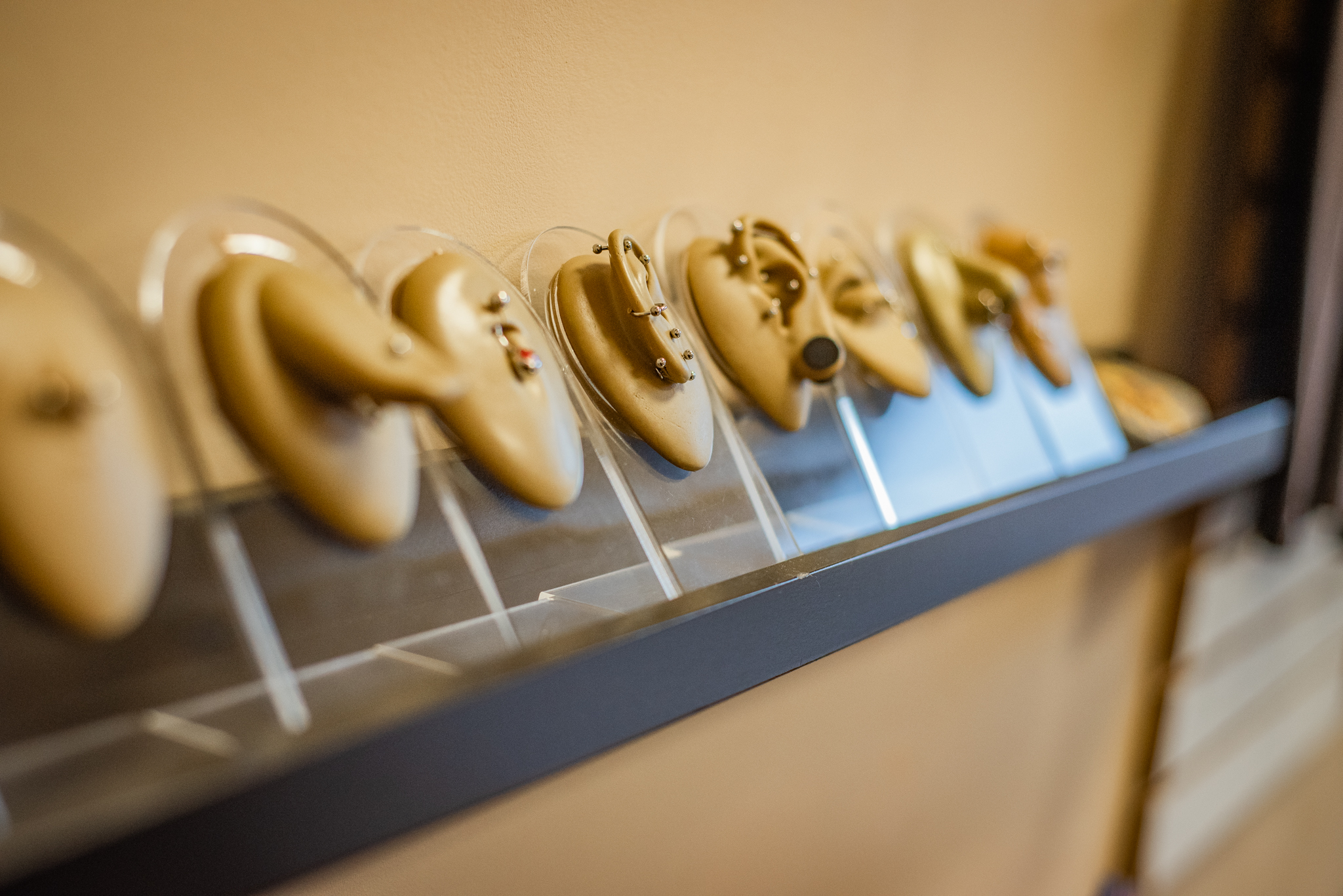TATTOO AFTERCARE
- Bandage: If a sterile gauze bandage is applied to your tattoo when you leave the studio, leave it on for 1-4 hours. After this time, carefully remove it and clean the tattoo.
- Cleaning: Gently wash the tattoo with warm water and mild antibacterial soap using only your hands (not a washcloth). Be sure to remove all blood or plasma to avoid scabbing.
- Drying: After cleaning, gently pat the tattoo dry with a clean, soft paper towel. Do not rub or scrub.
- Moisturizing: A few days after your new tattoo, apply a thin layer of moisturizer (such as Jergens, Keri Lotion, Tattoo Goo, or Cherry Balm). A little goes a long way—dab off excess with a paper towel. The tattoo should remain moist, not wet or shiny.
- Avoid Over-Moisturizing: If the moisturizer becomes runny or overly glossy, this indicates too much product. Dab off excess to prevent suffocating the tattoo or causing ink loss.
- Avoid harsh lotions: Do not use lotions with fragrance, color, or glitter during the healing process (usually two – 4 weeks).
- Sun Exposure: Avoid sun exposure on the tattoo until fully healed. A sunburn can significantly delay healing and cause the tattoo to fade.
- Keep it clean but avoid soaking: Avoid long showers or baths for two weeks. Prolonged soaking can loosen scabs or wash away ink. Short showers (under 10 minutes) are ideal.
- No scratching or picking: Your tattoo may get itchy as it heals. Instead of scratching, gently slap or tap the area to relieve itching.
- Avoid friction: Especially on tattoos in high-movement areas like hands or feet, excessive friction can extend healing time and affect the tattoo’s appearance.
- Avoid Pools, Beaches, Lakes, Hot tubs: Submerging your new tattoo in a swimming pool, beach, lake, or hot tub introduces bacteria and increases the risk of infection.
PIERCING AFTERCARE

- Clean Hands First: Always wash your hands thoroughly before touching your piercing or jewelry to avoid transferring dirt or bacteria.
- Cleaning the Piercing:
- Use a saline solution or a mild, non-alcoholic, fragrance-free soap to clean the piercing. Alcohol, hydrogen peroxide, or ointments can irritate the piercing and delay healing, so avoid using them.
- Saline solution is the most recommended option. You can purchase a pre-made solution or make your own by mixing 1/4 teaspoon of non-iodized sea salt in 8 oz of warm distilled water.
- Soaking & Cleaning:
- Soak the piercing in saline solution or apply it with a clean gauze pad or paper towel. Let it sit for 5-10 minutes to soften any crust or discharge.
- Gently wipe away any buildup using the soaked gauze or paper towel. If you use cotton swabs or Q-tips, make sure you don’t leave any fibers behind.
- Cleaning Frequency: Clean your piercing twice a day—once in the morning and once before bed. If exposed to sweat, rinse with saline solution to keep the area clean.
- Do Not Touch or Twist the Jewelry: Avoid touching, twisting, or moving the jewelry. Doing so can irritate the piercing, cause scarring, or lead to an infection. Clean your jewelry only if necessary, using saline solution or a soft cloth, and never rotate it while cleaning.
- Let It Breathe: Avoid covering the piercing with tight bandages or clothing that might restrict airflow. Let the piercing breathe and heal naturally.
- Avoid Submerging the Piercing: Do not swim in pools, hot tubs, or any other bodies of water until the piercing has fully healed. Regular showers are fine but avoid submerging your piercing for long periods.
- Monitoring Healing: Mild redness, swelling, tenderness, and clear/white discharge are normal. However, if you experience excessive swelling, pain, yellow/green pus, or heat, consult a professional or healthcare provider.
- Sleeping with Your Piercing: Try to avoid sleeping directly on your piercing during the healing process to prevent irritation and pressure.
- Avoid Makeup, Hair Products, and Lotions: Keep makeup, lotions, hair products, and perfumes away from the piercing.
- Jewelry Care: Make sure your jewelry is made from non-reactive, hypoallergenic materials like surgical steel, titanium, niobium, or gold. Avoid jewelry with nickel.
- Healing Time: Initial swelling can be 3-6 weeks, but full healing may take 6-9 months or longer. Be patient.
Important Aftercare Disclaimer:
We are not medical professionals, and while we provide basic aftercare advice for tattoos and piercings, we are not able to diagnose infections or other medical conditions. If you notice any unusual symptoms, such as excessive redness, swelling, yellow/green discharge, or discomfort that doesn’t improve, please consult your healthcare provider immediately. Your health and safety are our top priority, and seeking prompt medical attention is essential if an infection is suspected.
